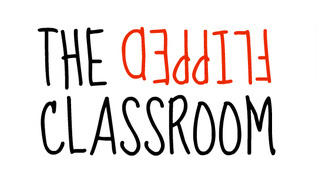
Section Branding
Header Content
I Flipped my Classroom the Hard Way - But You Don’t Have To!
Primary Content

I began creating my flipped classroom in 2009. The way I did it was to build over 500 online learning tools that students interact with at their own pace. Most of this work is done in the classroom with me, but sometimes they also work from home. I’m a huge fan of blended, or hybrid learning, in which students work individually or in small groups while the teacher provides much needed coaching and mentoring.
My long-term goal is to prepare students for a working world where they will probably spend the rest of their lives learning new things online - often without the help of a dedicated teacher. So my primary job is to teach students the self-monitoring, goal setting, and internal motivation skills they will need to thrive in the working world of the future. This has turned out to be a challenging, yet hugely rewarding role for me!
Initially I was worried that recording instructional videos would put me out of a job. Instead, it has been exactly the opposite. When students are empowered to learn at their own pace, they ask LOTS more questions. I now spend all of my instructional time answering questions, leading small group discussions, reviewing draft work with students, and listening to project proposals.
The number one thing I have found with this model is that the students rely on me to help them in real time - at the moment they are stuck on a problem. This is incredibly rewarding as a teacher because it means that every time I answer a question the student benefits from that answer immediately. From a learning-theory point of view, students are more likely to remember new material and connect it to existing knowledge when they apply that material immediately. Flipping my classroom has maximized the potential for these powerful teaching and learning moments.
As soon as I put students in the driver’s seat, the energy level in the room skyrocketed. Students became more engaged, more active, and had more fun. I also could tell that they were learning more, but I needed data. So in the 2014-15 school year, I gave my final exam as a pre- and post- test to four classes. My students’ average growth was an eye-popping 92%, and they achieved this alongside a 100% course pass rate. This method works for students because they learn more, and it works for teachers because we get the amazing experience of helping students at the exact moment they need us.
I did this the hard way - by spending hundreds of hours recording my own video tutorials and building them into a website. The exciting news I have to share is that this is no longer necessary. PBS LearningMedia has put together one of the most amazing collections of instructional videos I’ve ever seen. At this point, there are over 100,000 digital resources on their website. There are several powerful ways to use these tools. First of all, teachers can browse for videos by standards. If you have a series of curricular standards that you need to teach, you can easily find videos tailored to those standards. Teachers can also create storyboards, assignments, and even quiz questions to go along with the videos. Once teachers have built an online “lesson” around some PBS LearningMedia resources, it’s easy to share that lesson with classes. Plus, all of the material is the high quality work of PBS.
If you are a teacher who is thinking about flipping something - an assignment, a unit, or even a whole class, PBS LearningMedia is a great place to start. Their free resources and deep toolset make it extremely easy to build and share online lessons. As the word spreads about PBS LearningMedia, I know we’ll see more and more teachers creating more personalized learning experiences for their students!
______________________________________________________
Pasha Souvorin teaches video production at Phoenix High School in Lawrenceville, Georgia. Pasha was selected as a 2015 PBS LearningMedia Digital Innovator for his passion and commitment to innovative teaching practices that integrate digital media and technology in the classroom.
I began creating my flipp





